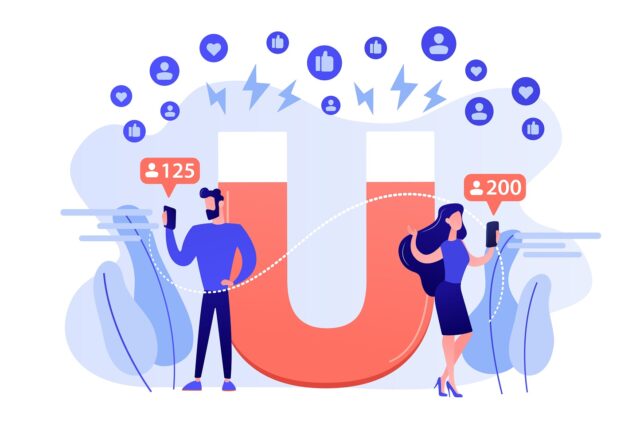When it comes to operational procedures, the capability to recognize and prioritize leads with high conversion prospects stands as a groundbreaking element. Imagine a scenario where your sales team focuses its actions on candidates that exhibit the highest likelihood of conversion. Predictive Lead Scoring turns this vision into actuality.
Employing sophisticated models, it delves into vast datasets, identifying patterns signaling strong potential in commerce and even online business success. Our goal is to unravel the intricacies of this advanced technique. We will conduct a detailed exploration of its fundamentals, advantages, and potential challenges that may arise in its application.
Explore how this strategy not only pinpoints potential clientele but also equips professionals to operate more efficiently, minimizing unnecessary efforts. Today, the adoption of predictive lead scoring isn’t merely an option. It’s a strategic necessity for companies striving to keep pace with industry transformations. The integration of predictive lead scoring with Sales CRM further enhances organizational efficiency by providing actionable insights seamlessly into customer relationship management workflows.
Unleashing the power of predictive lead scoring necessitates a robust foundation of CRM data enrichment. By integrating multifarious data streams into your customer relationship management system – from website interactions to social media footprints and beyond – you cultivate a fertile ground for predictive models to thrive.
These enriched data troves empower algorithms to discern the nuances that distinguish promising leads from mere curiosities, ultimately optimizing your sales initiatives. However, data accumulation is merely the first step; the true alchemical feat lies in extracting insights that elevate your outreach strategies to unprecedented heights of precision and resonance.
Thus, CRM data enrichment emerges as the indispensable catalyst, propelling predictive lead scoring from a theoretical concept into a game-changing reality that redefines the boundaries of business success.
Table of Contents
What Is Predictive Lead Scoring?
Traditional approaches often depend on predetermined standards and hand-operated evaluations to measure a lead’s potential. Yet, recognizing the constraints associated with these approaches has spurred the emergence of predictive lead scoring. This advanced methodology surpasses fixed means. It takes into account a wide spectrum of factors, including:
- Demographic details;
- Historical customer patterns;
- Online interactions;
- Lead source;
- Scoring models;
- Email engagement;
- Social media exchanges, etc.
This process relies heavily on data integration. It involves gathering and assimilating various types of info from numerous sources. To enhance this process further, AI development services and AI marketing tools are essential, particularly for implementing predictive lead scoring using machine learning and extensive datasets. The comprehensive nature of integration ensures a holistic view of each candidate.
At the core of this approach are cognitive computing systems. They study past records to pinpoint tendencies and correlations that may not be apparent through traditional analysis. The models continuously learn and adapt as new details become available.
It generates a lead score for each prospect based on the examination of multiple variables. These scores help prioritize leads by indicating their odds of converting. These models consider both implicit and explicit indicators.
Also, it often involves segmenting them into different categories based on their scores. This segmentation allows sales teams to tailor their approaches according to the characteristics and behaviors of each group. It helps in personalizing interactions and optimizing techniques for different segments.
Benefits of Predictive Lead Scoring
It is clear that this approach, including the use of virtual phone numbers and a cloud-based phone system, has surfaced as a revolutionary influence within the sphere of sales prospecting. It provides firms with a nuanced understanding of their leads. This offers a myriad of advantages that can significantly improve sales strategies. Let’s take a look at some of the most prominent ones.
Precision in Targeting
Email deliverability for precision in targeting email deliverability is a critical aspect of successful digital communication, ensuring that emails reach the intended recipients’ inboxes rather than getting lost in spam folders. One beneficial approach is to conduct a reverse email address lookup. This method provides substantial assistance in verifying the authenticity of the email addresses, thereby improving deliverability and cementing successful digital communication.
The accuracy achieved through it goes beyond mere identification of potential customers. It allows professionals to tailor their messaging and outreach strategies according to the distinctive characteristics and preferences of each lead. This individualized approach not only heightens the chances of successful conversion. It also plays a pivotal role in cultivating meaningful relationships with customers.
As Trish Bertuzzi, the founder and CEO of The Bridge group said:
“Prospects are making their purchase decision based on whether they think you understand their problems and you have the knowledge, resources, and commitment to solving them.”
Time Efficiency
Central to the efficacy of this methodology is its integral automation feature. This mechanization serves as a catalyst in streamlining operations, significantly saving valuable time for specialists. By mechanizing the often time-consuming and repetitive tasks linked to lead scoring, they are afforded the opportunity to reallocate their efforts strategically. This shift enables them to engage in more individualized interactions and dedicate more time to crucial strategic decision-making.
In this paradigm, mundane tasks such as data collection, scoring calculations, and routine follow-ups are seamlessly executed by a data research assistant. It frees up human resources for high-value activities. The precision achieved through automation also contributes to an overall increase in operational efficiency.
Higher Conversion Rates
As sales professionals prioritize leads identified through the Best IT Companies technique, the result is a finely tailored and precision-focused approach. This method surpasses the mere reduction of risks linked to pursuing less promising leads. It propels the sales pipeline into a domain of heightened efficiency.
Prioritizing prospects with a higher probability of becoming clients allows professionals to focus on areas where they can have the most impact. Consequently, the sales pipeline evolves into a responsive entity, sales growth metrics & KPIs adept at adjusting to the distinctive characteristics and tendencies of each prospect. This adaptation fosters a heightened rate of successful turnover. In parallel to this strategic approach in sales, comprehending why cash flow statement is important becomes crucial for businesses to maintain healthy financial operations and make informed decisions.
Better Cooperation Between Trade and Promotion
The union between trade and advertising, powered by the capabilities of predictive lead scoring and seamless Ui/Ux development services, expands its influence above the mere prioritization of leads. It modifies the traditional handoff between the two departments into a more strategic and informed exchange. Commercial teams receive prospects that are not just quantitatively substantial but also qualitatively promising.
Moreover, it enables a continuous feedback loop between the two. As the models evolve and learn from real-time data, both units can refine their techniques based on the latest insights. This ongoing process guarantees that the cooperation stays adaptable to fluctuations in the trading sector, shifts in consumer reactions, and overarching industry goals.
Challenges and Considerations
While the promise of predictive lead scoring is substantial, its successful implementation comes with its share of challenges. Unveiling the complete advantages of this system requires a nuanced understanding of the obstacles it presents. Below, we explore some of the primary difficulties enterprises must keep in mind.
Data Quality and Privacy
The success of this methodology hinges on the precision and comprehensiveness of data. Any inaccuracies or omissions within the details can markedly affect the model’s capacity to generate leads or precise predictions. This may result in less-than-optimal outcomes. Varied formats or contradictory information pose potential obstacles to the smooth operation of predictive models. Logz.io and their competitors offer alternatives for managing data quality and privacy effectively.
The element of timeliness holds significance, particularly in industries characterized by rapid changes. Obsolete information might not precisely mirror the present market conditions. It poses a potential risk to the exactness and pertinence of predictions. Plus, this process may involve dealing with sensitive information. Guaranteeing the protection of this data against unauthorized access or misuse is of utmost importance.
Model Bias
Historical data can mirror societal biases, existing prejudices, or systemic inequities. If left unaddressed, they can seep into the proactive evaluation model, influencing its decision-making process. In some instances, this model might not merely perpetuate biases but could exacerbate them. It may unintentionally reinforce and amplify certain patterns, leading to an even more pronounced skew in the results.
Biased predictions may result in certain leads being unfairly treated based on factors beyond their control. This not only raises ethical concerns but can also lead to missed opportunities or, conversely, misguided efforts.
Difficult Implementation
Executing this kind of strategy requires proficiency in both data science and statistical learning. Obtaining or cultivating such specialized skills within a company can pose a considerable obstacle. It’s especially hard for smaller enterprises grappling with constrained resources.
Ensuring integration with existing systems and databases poses a challenge as well. The model must align with the organization’s infrastructure, requiring coordination between IT, sales, and advertising units. Also, every firm has its own unique trade dynamics. Tailoring the strategy to align with these specific dynamics requires a deep knowledge of the company’s goals and client base.
In navigating these concerns, enterprises should adopt a strategic approach and consider the following:
| Challenge | Solution |
| Data Quality and Privacy Concerns | Continuous Data Quality Assurance |
| Model Bias | Regular Model Audits and Adjustments |
| Complex Implementation | Cross-Functional Collaboration |
Summing Up
The adoption of predictive lead scoring positions itself as the linchpin for future-proof sales prospecting. This innovative methodology uses the power of progressive analysis and intelligent systems. It offers companies a transformative approach to identifying and prioritizing leads.
The precision, efficiency, and adaptability it brings to the prospecting process redefine how sales teams engage with potential customers. In a similar vein, the use of HR Templates in managing team dynamics and employee engagement can significantly streamline internal processes, ensuring that the sales team remains focused and efficient. As organizations handle the concerns of accuracy, privacy concerns, bias mitigation, and complex realization, the promise of this approach remains resolute.
It not only streamlines workflows but also promotes a union of commerce and promotion. It fosters a strategic approach to customer acquisition. With its ability to continuously learn, adapt, and refine predictions, it emerges as an indispensable tool propelling sales into a data-driven future. The insights it offers steer the course of success in a competitive business environment.

